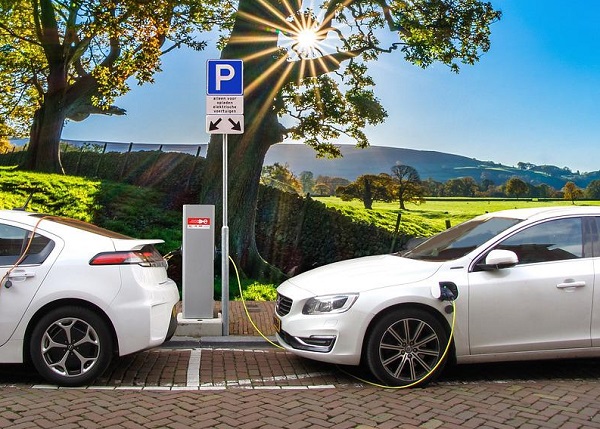UPDATE: The Maryland on Tuesday blasted Governor Moore’s announcement.
Original story below…
ANNAPOLIS, MD—Governor Wes Moore this week announced Maryland’s adoption of the multi-state Advanced Clean Cars II rule. Maryland is moving quickly to adopt the regulation, which requires manufacturers to continuously increase the share of electric vehicles they sell, reaching 100% of passenger car and light truck sales by model year 2035.
“Today, we’re talking about a major transformation that is going to define this administration—and that’s how we turn Maryland from a state powered by oil and gas to a state powered by clean energy,” said Governor Moore on Tuesday. “I am confident that the state of Maryland can and will lead the clean energy revolution.”
The Advanced Clean Cars II rule is a vehicle emissions standard first adopted by California using its unique authority under the federal Clean Air Act. Now that California has adopted the standards, other states can follow suit.
Maryland has the most ambitious climate goals of any state.
According to a Maryland Department of the Environment analysis, 383,000 fewer new gas-powered vehicles would be sold under the new rule by 2030, rising to 1.68 million fewer conventional vehicles by 2035. Between 2026 and 2040, the rule will deliver additional vehicular reductions of more than 6,000 tons of nitrogen oxides, as well as reduction of vehicular and power plant carbon dioxide emission by more than 82 million metric tons.
“The Advanced Clean Cars II regulation is a big step toward cleaner air and a more aggressive response to the threats posed by climate change,” said Maryland Department of the Environment Secretary Serena McIlwain. “This rule will help position us to meet the goals of our Climate Solutions Now Act and 2030 Greenhouse Gas Reduction Act Plan while bringing economic benefits to Marylanders.”
In an effort to help make electric vehicles available to all Marylanders, the rule also features flexibility that encourages manufacturers to provide electric vehicles in overburdened and underserved communities, including community-based ridesharing or car sharing programs.
“As a business at the forefront of mobility solutions, we know that technology and market demand are both ready to support the transition to clean vehicles,” said Siemens Head of External Affairs and Policy, Northeast/Mid-Atlantic Ryan Dalton. “Strong state standards that reflect the escalating consumer demand and set clear expectations for market growth over the coming years are key to managing the transition. We support the adoption of the Advanced Clean Cars II rule in Maryland because it is the best way to attract investment and provide predictability for manufacturers, companies, workforces, and consumers alike.”
To adopt the rule as quickly as possible, the Maryland Department of the Environment presented the proposed regulation to the state’s Air Quality Control Advisory Council at its first meeting of the year this morning. The council voted to recommend that the department move forward in proposing a regulation to enact the new standards. MDE will follow the process for a proposed regulation, which includes a public hearing and opportunity for public comment, to allow for a regulation to take effect in September.
While electric vehicles are, in theory, better for the environment, they do not come without certain risks that consumers should be aware of.
Electrocution Dangers
CNN reported on a study by the Society of Automotive Engineers that expressed concerns for personnel who respond to EV accidents, such as paramedics and towing operators. They felt a risk for electrical shock existed, resulting from potentially damaged electrical systems in a crash. The group thought a logical safety solution would be to factory-install a “kill” switch for the battery. They recommended that it be located in a standard, accessible location to prevent potential electrocution.
Dangers for Pedestrians and Bicyclists
The NHTSA requires that EVs be equipped with a warning sound by 2019. Unlike vehicles with combustion engines, EVs are extremely quiet during operation and are less likely to be heard by pedestrians, bicyclists, and the visually impaired. With this standard, these cars will emit some type of sound when traveling under 20 miles per hour. This rule was put in place because of data showing a 20% greater likelihood of pedestrian-related collisions.
Fire Danger
Tesla is a leading producer of EVs that has received criticism over the safety of their vehicles’ batteries, largely in response to a crash in Indiana involving their Model S.
Twenty-seven-year-old Casey Speckman was driving a Model S when she apparently swerved to avoid another vehicle and hit a tree and the side of a garage. Speckman died from the impact; passenger Kevin McCarthy was killed by a subsequent battery explosion and fire. Emergency personnel on the scene said that individual units from the vehicle’s battery pack continued to explode. John Speckman, Casey’s father, believes that if they had not been in an EV, the two victims may not have been killed.
Despite these and other apparent risks, the EV movement in Maryland moves forward.
“By acting so immediately to advance zero-emission vehicles and reduce harmful emissions, Governor Moore and Secretary McIlwain are backing up their pledge to position Maryland as a national leader in fighting climate change and its contribution to environmental injustices,” said Executive Director of the Maryland League of Conservation Voters Kim Coble. “The Advanced Clean Cars II Rule is a proven policy for reducing greenhouse gasses from transportation and will jumpstart Maryland’s implementation of the landmark Climate Solutions Now Act.”
Photo via Pixabay
Do you value local journalism? Support NottinghamMD.com today.

